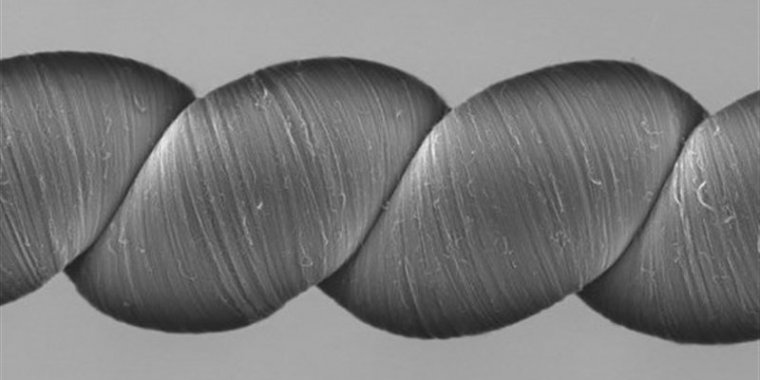| News / Science News |
Energy-Harvesting Yarns Generate Electricity
Scientists from The University of Texas at Dallas and Hanyang University in South Korea developed high-tech yarns that generate electricity when they are stretched or twisted. 'Twistron' yarns have many possible applications, such as harvesting energy from the motion of ocean waves or from temperature fluctuations.

Energy-harvesting yarns generate electricity. ![]()
When sewn into a shirt, these yarns served as a self-powered breathing monitor.
The yarns are constructed from carbon nanotubes, which are hollow cylinders of carbon 10,000 times smaller in diameter than a human hair.
The researchers first twist-spun the nanotubes into high-strength, lightweight yarns. To make the yarns highly elastic, they introduced so much twist that the yarns coiled like an over-twisted rubber band.
In order to generate electricity, the yarns must be either submerged in or coated with an ionically conducting material, or electrolyte, which can be as simple as a mixture of ordinary table salt and water.
When a harvester yarn is twisted or stretched, the volume of the carbon nanotube yarn decreases, bringing the electric charges on the yarn closer together and increasing their energy, Haines said. This increases the voltage associated with the charge stored in the yarn, enabling the harvesting of electricity. (Tasnim News Agency)
YOU MAY ALSO LIKE





